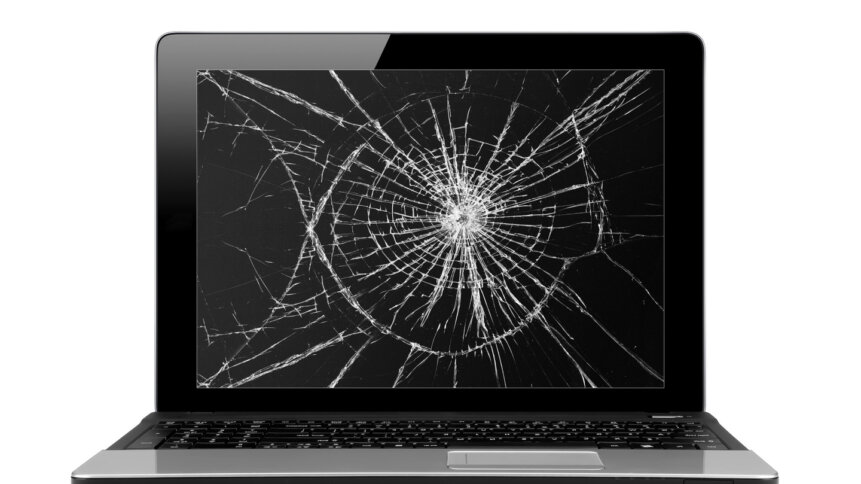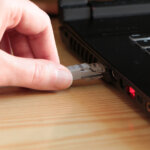Unable to connect to the network? Here’s why.

|
Getting your Trinity Audio player ready...
|
When you want to get online, there’s little that’s more infuriating than being told you’re unable to connect to the network. It feels almost antithetical to life in the 21st century to be denied access to the web, where all the information (and misinformation) in the world lives – and where your business systems may well be located.
But there are a solid handful of reasons why you might be unable to connect to the network, and you can broadly break them down into four categories: device issues, router issues, cabling issues, and speed issues. Let’s check out some of the usual suspects, to see if we can’t get you reconnected.
Check your device.
First of all, we’re going to assume whatever device you use, it’s got a history of connecting to the network smoothly, and is now refusing.
If that’s the case, ask yourself a question – when did you last run an update on your machine? When did you last run a security scan on it? Come to that, in the age of ubiquitous connection, when did you last turn it off?
These might sound like flippant questions, but they’re actually the three initial stages to narrowing down why you might be unable to connect to the network.
Before we get into those stages though, let’s eliminate the obvious. Check your connection settings. Do you have recognizable networks available to you? Bizarrely, some devices, particularly those where the user has selected “Connect automatically” for networks that are less than ubiquitously available, will try to connect to those networks even when the device is significantly out of reach of them.
Make sure there’s a network you can see, that in all other respects looks as though you should be able to connect to it. Attempt to select the strongest network to which, for instance, you have password access.
Assuming you can see a network you should be able to connect to, and you simply can’t do it, it’s time to move onto the three basics.
First, open up your security program, and run as full a scan as you have the patience to endure.
Check the results – does your security program tell you there are things that might be preventing your device from connecting to the network? If so, that’s likely to be your problem. Follow any resolution procedures recommended by your security program.
Whether it shows any issues or not, once you’ve finished a security scan for potential problems, do yourself and your device a favor. Turn it off.
Wait a minute. That’s as much for your own peace of mind as it is for your device’s benefit.
Restart the device, and see whether it automatically runs an update – it’s possible that it’s been crying out for the latest patches and updates, and that in their absence, it’s refusing to connect you to the network because it knows it’s insufficiently protected for such activity.
Even if it doesn’t auto-run an update, type “system settings” in your device’s search function (NOT your web browser’s search bar or URL window – you can’t connect, remember, so that’s not going to get you anywhere. Unless it does, in which case – problem solved! You’re back on the network!). Search your system settings and you’ll find a “Check for updates” option. Click that button, and commit to any updates that it finds. Occasionally, once you’ve run non-automatic updates, your device will prompt you to restart it again. Do as it says.
In the event that you’re connecting to the net via a wired connection, make sure to double-check the connection cabling, and in the event that you have a spare, try that, to check for redundancy or cable issues.
If you’ve done all that, and you still have no connection to the network, the chances are that the issue lies outside the device itself.
Check your router.
Assuming you own the router and can get access to it, there are a handful of obvious things to check.
Firstly – and yes, we know this sounds insulting, but the number of times this comes up is embarrassing in a civilized world – are you sure you’ve kept up the payments on the internet service?
If you’re sure, take a look at your router.
READ NEXT

Wired or wifi computer connection?
Does it have all the signs of a healthy router, ready to serve? Lots of lights, usually steady, and often either green or blue. Chances are the router’s healthy, and the issue exists either between your device and the router or between the router and the network.
Is there any flickering to the lights? Any red or orange lights? No lights at all? If you see any of those things, you could be in hardware hell. Check the cabling that powers and connects your router. You’re looking for anything that looks melted, anything that looks frayed, or anything that goes out of its way to draw your attention.
If you see any “obvious” cabling issues, you may be due a trip to your local electronics store for new cabling.
The engineer’s secret weapon.
But before you do that, the engineer’s secret weapon is always worth a try. Turn off the router. Even do the unthinkable and unplug it at the wall. Leave it unplugged for anything up to five minutes. Go grab a beverage, use your phone’s data to check social media.
Or alternatively, while you’re having this short FOMO moment, use your phone’s data to check your Internet Service Provider’s website, to see if there are any scheduled service updates or outages in your area – it could be that you don’t need new cables or a new router if there’s an understood and ongoing issue.
If there is, go somewhere else and connect to the network there instead. If there isn’t, congratulations, it’s all about you. You should now have given your router enough time to clear any digital migraine from its system. Plug it in again, and let it get its wits back. Be patient – that can take a few minutes.
Still flickering? Still orange, red or non-existent lights?
Looks like you may have a dead router. That’s going to slow you down until you can get it replaced. Call your ISP ASAP and get that sorted out. But before you pay out for new equipment, talk to your ISP’s technical support team – while you may think you have a dead router, they may have device-specific advice on how to triage it back to life and obedience.
If your router looks like it should work, and is displaying blue or green lights, but you’re still unable to connect to the network, you may have one of a couple of additional issues.
Are you authenticated?
In some ways, authentication issues are as bone-basic as not paying the bill to get continued service. When you’re trying to connect to the network, the process will involve some level of authentication – to ensure you have the rights to access the network on this machine. One finger slip in entering that information, and you’ll be denied access to the network.
Check. Check again. And if you’re absolutely certain you’re using the right authentication key, resort to the old faithful remedies passed down by generations of engineers. Turn off your device, get up, stretch, have a beverage, clear your head – you may be thinking too hard. Turn things back on and enter the authentication details again. Sometimes, you can’t see what you’re actually entering for the certainty of what you think you’re entering.
If you still have authentication issues, it’s time to call your ISP. But double-check the authentication key one more time before you do – there’s no shame like complaining to a service provider, only for them to point out the transposed numbers you’ve been typing.
If you don’t have any of the issues we’ve talked about so far, you may have speed issues. If so, there are tricks you can try. First, try changing the channel of the router you’re connecting through. This is only likely to be an issue – and therefore a solution – if your router is subject to significant or heavy traffic. If it is, then a change of channel might lighten the load on the channel’s bandwidth and let you connect.
It’s also possible that for some reason, your router is trying to connect you to a server that’s a ridiculous distance away, or that your local server is overwhelmed right now. You can test your speed online (again, you may have to take details from your device and then check them via your smartphone’s data) to see whether there are problems with the server you’re trying to connect to, which will also be speed issues keeping you from connecting to the network. If there are, changing to a different server with fewer (or, ideally, no) issues might save you lots of frustration and get you connected to the network where you belong.
These are the usual suspects when it comes to being inexplicably unable to connect to the network. If nothing here works for you, it’s time to make contact with your internet service provider, who will be able to walk you through processes, take over your device to inspect it, and supply any replacement router you may need.









